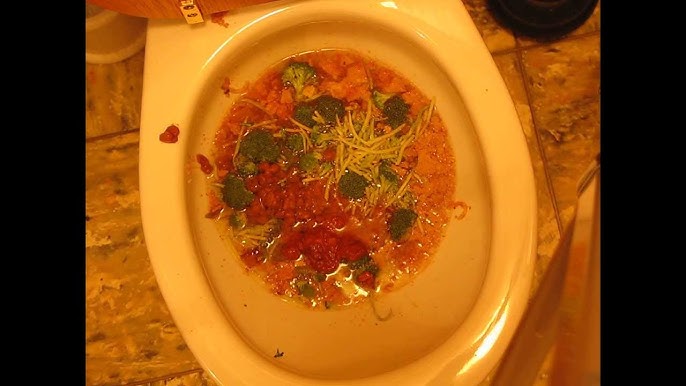Is it Common to Flush Food in the Toilet?
Is it Common to Flush Food in the Toilet?
Blog Article
Every person maintains his or her own perception with regards to Flushing Food Down the Toilet?.

Intro
Many individuals are frequently faced with the problem of what to do with food waste, particularly when it pertains to leftovers or scraps. One typical concern that arises is whether it's alright to flush food down the bathroom. In this short article, we'll explore the reasons individuals could take into consideration flushing food, the consequences of doing so, and different techniques for proper disposal.
Reasons that people might consider flushing food
Absence of understanding
Some individuals may not be aware of the potential injury triggered by purging food down the toilet. They may wrongly think that it's a harmless technique.
Comfort
Flushing food down the bathroom might look like a fast and very easy service to dealing with undesirable scraps, specifically when there's no nearby trash bin offered.
Negligence
In some cases, individuals may simply pick to flush food out of sheer laziness, without thinking about the effects of their activities.
Effects of flushing food down the commode
Environmental impact
Food waste that winds up in rivers can add to pollution and damage water ecological communities. In addition, the water utilized to flush food can stress water sources.
Pipes issues
Purging food can bring about clogged up pipes and drains, triggering expensive pipes repair services and hassles.
Kinds of food that need to not be flushed
Fibrous foods
Foods with coarse structures such as celery or corn husks can get entangled in pipelines and create blockages.
Starchy foods
Starchy foods like pasta and rice can take in water and swell, leading to blockages in pipes.
Oils and fats
Greasy foods like bacon or cooking oils ought to never ever be flushed down the commode as they can solidify and create obstructions.
Appropriate disposal techniques for food waste
Utilizing a garbage disposal
For homes equipped with garbage disposals, food scraps can be ground up and flushed via the pipes system. Nonetheless, not all foods are suitable for disposal in this fashion.
Recycling
Particular food packaging materials can be recycled, lowering waste and decreasing environmental effect.
Composting
Composting is an environmentally friendly method to throw away food waste. Organic materials can be composted and used to enhance soil for horticulture.
The importance of appropriate waste administration
Reducing environmental harm
Correct waste management techniques, such as composting and recycling, assistance lessen pollution and preserve natural resources for future generations.
Shielding pipes systems
By preventing the technique of flushing food down the bathroom, property owners can stop costly pipes repairs and maintain the honesty of their plumbing systems.
Final thought
Finally, while it might be appealing to flush food down the commode for convenience, it is necessary to understand the possible consequences of this action. By embracing correct waste management methods and throwing away food waste responsibly, people can add to healthier plumbing systems and a cleaner setting for all.
FLUSH FOOD DOWN THE TOILET?
FLUSHING FOOD CAN CAUSE BLOCKED DRAINS IN YOUR HOME
All of the plumbing fixtures in your home are connected to the same sewer pipe outside of your home. This outdoor sewer pipe is responsible for transporting all the wastewater from your home to the Council sewer mains. Even small pieces of food that go down the kitchen sink can cause problems for your sewer. It should therefore be obvious that flushing larger bits of food, such as meat, risks a clog in either the toilet itself or the sewer pipes. Flushing greasy food is even more problematic because oil coagulates when it cools, coating the interior lining of your pipes.
THE TOILET IS NOT A BIN
Food isn’t the only thing that people shouldn’t be flushing down the toilet. People use the toilet to dispose of all kinds of things such as tampons, makeup wipes, dental floss, kitty litter and even underwear. Water goes to great lengths to educate residents about the high costs and stress placed on wastewater treatment systems simply from people flushing the wrong stuff down the toilet. It costs taxpayers millions of dollars each year, and homeowners thousands in blocked drain repairs.
FLUSHING FOOD IS A WASTE OF WATER
Flushing food is a waste of our most precious resource - water. In June this year Level 1 water restrictions were introduced to protect water supply from drought conditions. Much of New South Wales continues to be affected by prolonged drought with recent figures revealing up to 97 per cent of the state remains in drought. Depending on whether you have a single or dual flush toilet, every single flush uses between five and 11 litres of water. In the current climate this is a huge amount of water to be wasting on flushing food that should be placed in the bin (or better yet, the compost).
https://www.jabplumbingsolutions.com.au/blog/can-you-flush-food-down-the-toilet

I ran across that blog entry on Flushing Food Down the Toilet? when doing a search on the web. Do you know about somebody who is very much interested in the subject? Be sure promote it. Thanks a lot for taking the time to read it.
Click Here Report this page